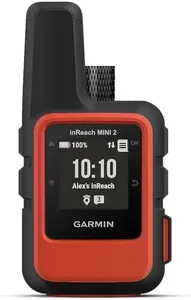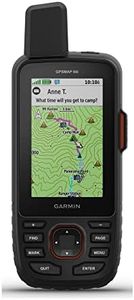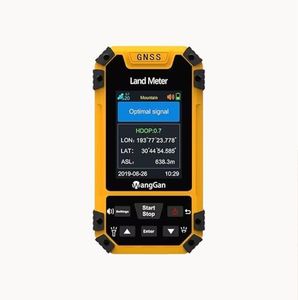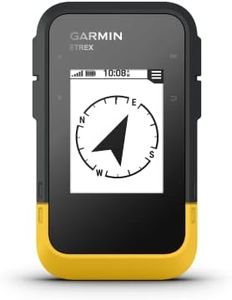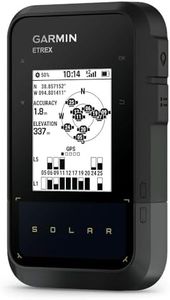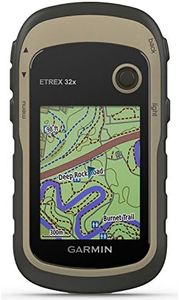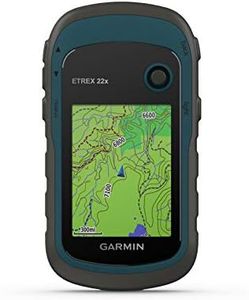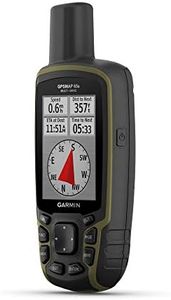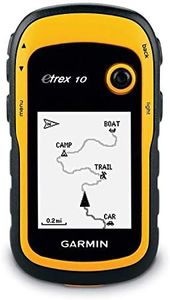We Use CookiesWe use cookies to enhance the security, performance,
functionality and for analytical and promotional activities. By continuing to browse this site you
are agreeing to our privacy policy
10 Best Handheld Gps Units
From leading brands and best sellers available on the web.Buying Guide for the Best Handheld Gps Units
Choosing the right handheld GPS unit can be made much easier if you understand your own needs and the basic features of these devices. Whether you're hiking, geocaching, or navigating remote areas, a GPS can offer peace of mind and convenience. When selecting a model, it’s important to consider how and where you will use your device, as different activities may require different capabilities. By understanding key specifications, you can find a GPS unit that will reliably guide you where you want to go.Screen Size and Display TypeThe screen size refers to how large the visible area of the GPS display is, while the display type indicates whether it is color or monochrome, and if it is touch-sensitive or uses physical buttons. A larger screen makes maps and data easier to read, which is valuable if you don’t want to squint or if you plan to use mapping features extensively. However, larger screens can make the device bulkier and use more battery. Touch screens can be more intuitive but may not work well with gloves or in wet conditions; button navigation is more reliable in challenging environments but can be slower to use. Pick a screen size and type that balances readability and comfort for your typical usage: smaller, simpler displays for basic hiking, and larger or color screens for activities requiring detailed mapping.
Satellite Systems SupportedMost modern handheld GPS units support multiple satellite systems such as GPS (US), GLONASS (Russia), Galileo (EU), and others. Supporting more systems allows for faster and more accurate positioning, especially in areas with heavy tree cover or deep valleys. If you usually hike or explore dense forests or mountainous terrain, prefer a unit that can connect to more than one satellite network for improved reliability. For more open areas, a single-system GPS may be sufficient.
Battery Type and LifeBattery life tells you how long the device can operate between charges or battery swaps, and the type refers to whether it uses rechargeable batteries or standard disposable ones. Longer battery life is critical for multi-day trips or times when charging isn’t easy, while being able to swap batteries can extend use or make it easier to carry spares. If you go on short, day-long outings and can recharge often, internal batteries may suffice. For longer treks or remote adventures, choose a device with replaceable batteries and longer runtime.
Durability and Weather ResistanceDurability and water resistance are crucial specs if you plan to use the device outdoors in tough environments. Look for units with an IPX rating or those described as waterproof and shock-resistant. A rugged build ensures the GPS survives accidental drops, rain, and dust. If your outdoor use is casual and in fair weather, standard resistance is fine, but for hiking, camping, kayaking, or mountaineering, robust protection is a must.
Mapping and MemoryThis spec describes whether the GPS unit comes preloaded with maps or allows you to add your own, as well as the internal memory or SD card support for storing maps, waypoints, and routes. Expanded mapping options and more memory are helpful for users who like planning complex routes, off-trail exploration, or traveling to different regions. If you just need breadcrumb navigation or simple waypoints, basic mapping is enough. For advanced navigation, opt for devices with more memory and map support.
Additional Features (Compass, Barometer, Wireless Connectivity)Many handheld GPS units now include digital compasses, barometric altimeters, or wireless features like Bluetooth or ANT+. These additions help provide more accurate heading, altitude, or allow you to easily share your data or connect to your smartphone and other devices. Decide what features will genuinely be useful for your activity—navigation purists may focus on accuracy while tech-savvy users might appreciate wireless syncing and added sensors.

